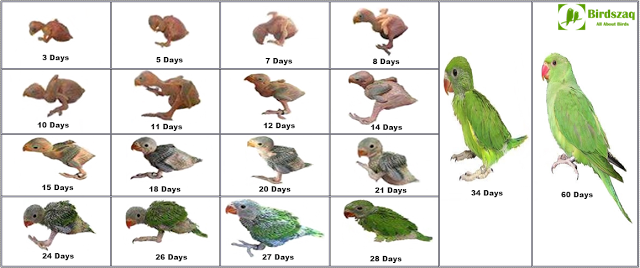Parrots are omnivores and they almost eat everything they are offered. And as time passes they become a part of family just like a family member. They talk alot and respond to almost every activity in home. Due to this friendly bond with humans, many times people unintentionally offer them foods that are toxic for them.
Below the foods that are toxic to birds are mentioned. But some foods are not toxic if they are offered in small amount.
Foods that must be on your Do Not Feed list.
Chocolate
Theobromine and caffeine, which are both classified as methylxanthines, can cause hyperactivity, increased heart rate, tremors, possibly seizures, and potentially death in pets if it is ingested at a toxic dose. As a general rule, the darker and more bitter the chocolate, the more potentially toxic it is to your pet.
Avocado
All parts of the avocado plant contain persin, a fungicidal toxin that has been reported to be a cardiac toxin to birds. Small birds like canaries and budgies are considered to be more susceptible; however, clinical signs have been observed in other bird species. Clinical signs like respiratory distress usually develop 12 hours after ingestion and death can occur within one to two days.
Onion & Garlic
Onion and garlic toxicity is well recognized in dogs and cats. Those in concentrated forms, such as garlic powder or onion soup mix, are more potent than the raw vegetable form.
Comfrey
This green leaf herb is popular with some canary breeders, but studies in human medicine have shown it can cause liver damage.
Fruit Pits & Apple Seeds
While diced apple is okay for pet birds, the apple seeds contain cyanide and should always be removed prior to feeding apple to your bird. Pits from cherries, plums, apricots and peaches also contain cyanide so never allow your bird to chew on them.
High-Fat, High-Sodium, High-Sugar Foods
Although not technically toxic, table foods laden with high concentrations of fat, salt and sugar can cause serious health problems in birds. Instead of offering your bird a bit of pasta with sauce, let it enjoy a noodle before you add the sauce, salt or butter.
Sugar-Free CandySugar-free candy might offer a better alternative to regular sweets for people, but it often contains the sugar alternative, xylitol, which has been associated with severe hypoglycemia and liver damage in dogs.Not recommended but can be fed sometimes in small amount.
Peanuts
Moldy peanuts and/or peanut products (as well as corn and other cereal grains) can be contaminated by a toxin-producing fungus.
Certain Plants
Birds can eat green tomatoes, potatoes, peppers and eggplant; however these plants are all members of the nightshade family. This means that the fruits are safe to eat, but the plants themselves are toxic. By the same token, the leaves of the rhubarb plant contain oxalate crystals, which can cause kidney problems.
Grit
Parrots do not need grit and some birds, such as parakeets (budgies), cockatiels and lovebirds, might overeat grit when not feeling well, which can potentially lead to intestinal blockage. Grit can help doves/pigeons and other species that consume seeds whole digest their food, but since parrots crack the seeds hulls before consuming them, they generally do not need this added supplement.
Dairy products
Although not technically toxic, studies show that birds cannot digest lactose, which is found in milk and other dairy products. As the amount of dairy in the diet increases, birds can develop diarrhea. Not all dairy products contain lactose and/or have very little lactose in them, such as some cheeses and yogurts — still these foods should be fed as an occasional treat and in small amounts.
Mushrooms
Mushrooms are occasionally included on toxic-food lists. There are a few toxic mushroom varieties, however mushrooms that can be eaten by people are also considered safe for pets.
Credit: Dr. Christal Pollock
About Christal Pollock
Dr. Christal Pollock is a veterinary consultant for Lafeber Company. Christal currently works as editor and technical writer for LafeberVet and she is also co-manager of the Lafeber Company Veterinary Student Program.

















